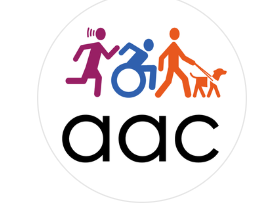Communication is a fundamental aspect of human interaction, allowing us to express our thoughts, needs, and emotions. However, for individuals with speech or language impairments, this basic form of connection can be challenging. In such cases, Augmentative and Alternative Communication (AAC) devices emerge as powerful tools, empowering individuals to overcome communication barriers and engage […]
Design
Exploring the Spectrum of Assistive Technologies
Welcome back to our ongoing series on assistive technologies! In our previous post, we began our exploration of these incredible innovations and their impact on the lives of individuals with disabilities. In this second part, we will continue our journey, shedding light on additional types of assistive technologies that have revolutionized accessibility and independence. From […]
Empowering Inclusion: The Power of Assistive Technology and Digital Accessibility
In today’s digital age, technology has transformed the way we live, work, and interact with the world. However, not everyone benefits equally from these advancements. Many individuals with disabilities face barriers to accessing and utilizing digital platforms and technologies. This is where assistive technology and digital accessibility come into play, bridging the gap and […]
Enhancing Lives through Assistive Technology: Empowering Individuals with Disabilities
Technology has become an integral part of our daily lives in today’s rapidly advancing world. From smartphones to smart homes, technology has transformed how we communicate, work, and navigate the world. But there is one aspect of technology that often goes unnoticed, yet holds immense potential for transforming lives – assistive technology. In this blog […]
2023 Global Accessibility Awareness Day
In an increasingly interconnected world, digital accessibility has emerged as a vital component of creating inclusive experiences for individuals with disabilities. Global Accessibility Awareness Day (GAAD) serves as an annual reminder of the importance of accessibility and aims to promote awareness and understanding among developers, designers, and decision-makers. In this blog post, we’ll explore the […]
Code Review Testing for Inclusive Digital Products: Digital Accessibility Testing Fundamentals 4 of 4
Welcome back to our series on Digital Accessibility Testing Fundamentals! In this last installment, we’ll discuss some of the Code Review Testing for digital accessibility and why it is a critical step toward building inclusive digital products. In today’s digital landscape, accessibility has become an integral part of creating inclusive and user-friendly experiences for all individuals. […]
Unboxing the Box-Sizing Property in CSS
Box-sizing property in CSS Box-sizing is a CSS property that helps us set the height and width of an element. Sometimes, when we set the height and width of an element, it doesn’t work as expected. In such situations, we can use the box-sizing property to adjust the element’s size. Box-model: The Box-model is a […]
Icon Library in Optimizely CMS
What are Icons? Icons are graphical representations of different elements on a website. They make the webpages visually appealing and like any other image, have a stronger connection and retention to the end user’s memory than plain text. When used in moderation and the right way, they can be self-explanatory and reduce the need for […]
The Power of User Testing for Web Accessibility: Digital Accessibility Testing Fundamentals 3 of 4
Welcome back to our series on Digital Accessibility Testing Fundamentals! In this third installment, we’ll discuss some of the user testing techniques and tools for digital accessibility. User Testing In our increasingly digital world, ensuring accessibility for all users is paramount. User testing has emerged as a powerful tool for gathering valuable feedback on digital products […]
Automation Testing for Web Accessibility: Digital Accessibility Testing Fundamentals 2 of 4
Welcome back to our series on Digital Accessibility Testing Fundamentals! In this second installment, we’ll discuss some of the automation testing techniques and tools for digital accessibility. Automation Testing Automation testing for digital accessibility refers to the use of automated tools and techniques to assess the accessibility of digital products such as websites, web applications, and […]
Manual Testing for Web Accessibility: Digital Accessibility Testing Fundamentals 1 of 4
Digital Accessibility Testing Fundamentals Welcome back to our series on Digital Accessibility Testing Fundamentals! In this first installment, we’ll discuss some of the manual testing techniques for digital accessibility. Manual Testing Digital Accessibility manual testing techniques are crucial for ensuring that websites and applications are accessible to all users, including those with disabilities. While automated […]
Digital Accessibility Testing Fundamentals
Welcome back to our new series on Digital Accessibility Testing Fundamentals! In this series, we’ll be discussing the Digital Accessibility Testing Fundamentals. Digital accessibility testing evaluates digital products, such as websites, mobile applications, and software, to ensure that they can be accessed and used by people with disabilities. This includes individuals with visual, hearing, motor, […]











